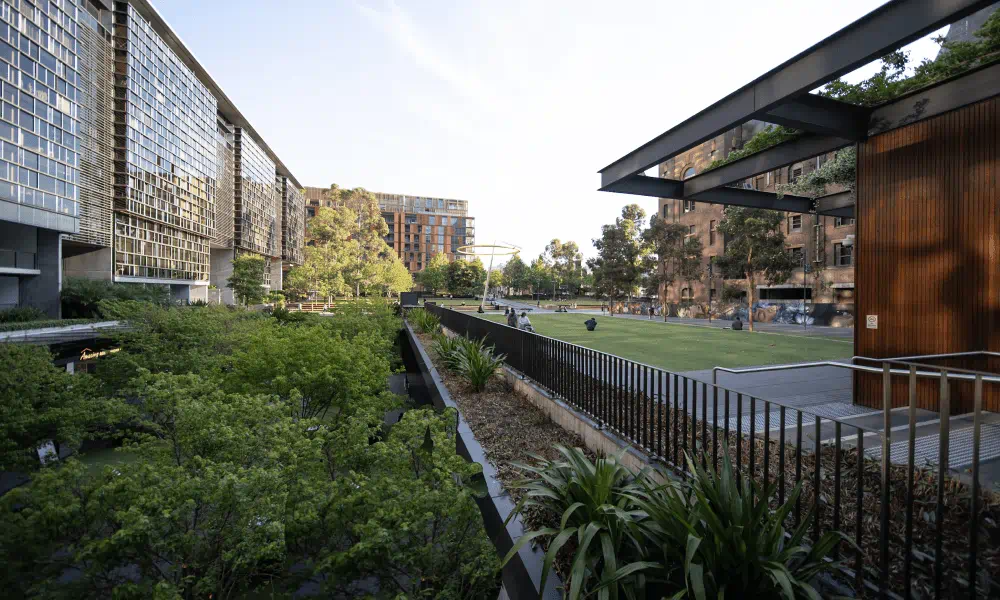There are just over 2000 days until our calendars tick over to 2030 and by then, an estimated five billion people will call cities their home. It’s timely to check in on progress toward making these cities sustainable.
The Arcadis’ Sustainable Cities Index (SCI) ranks 100 cities on 67 different metrics, some of which reflect the UN’s 17 Sustainable Development Goals (SDGs). The metrics range from clean water and sanitation to affordable and clean energy, access to housing and decent work, ease of doing business and air quality. All up the SCI plots 6,700 data points, making it a robust global study.
As in previous years, the 2024 SCI ranks each city’s performance under the pillars of Planet (measuring environmental factors), People (social performance and quality of life) and Profit (business environment and economic performance). This year the SCI introduces a new pillar – Progress – a dynamic measure that considers a city’s journey towards the SDGs over time.
The world’s most sustainable cities in 2024
In 2024 Amsterdam ranks as the world’s most sustainable city, performing strongly across all SCI pillars. Western European cities generally dominate the upper rankings. That’s not a surprise; in our study the Planet pillar correlates strongly with overall success and European cities are renowned for their progressive, pro-environment planning.
Business-friendly North American cities perform well on Profit, but poor People and Planet indicators sees them in the middle of the pack overall. Indeed, the highest-ranked North American city is San Francisco, coming in at 35. Asian cities ranked well in Progress, delivering strong gains in sustainability albeit in many cases off a relatively low base. Shanghai and Beijing cracked the top 20, sitting just behind Singapore.
Australia’s performance

Australians love global medal tallies so there is keen interest in where we sit. Of the four Australian cities in the index, Perth ranked highest at 25, followed by Melbourne (32), Sydney (33) and Brisbane (38).
So how is Perth Australia’s most sustainable city? Because of its very strong ranking in the Profit pillar, reflecting in turn the concentration of corporate headquarters in Perth per capita. It was also boosted by good air quality measurements and low congestion, not surprising given its relatively small and dispersed population.
Melbourne did well on Progress but less so on Planet. Sydney, one spot below Melbourne and consistent across most metrics, outperformed on People, based on a strong public transport network and cultural program. Brisbane ranked well on Progress and Planet, reflecting its ample green space and relatively low carbon footprint.
As interesting as they are, we need to put the Australian results in perspective. The SCI is a ranking and not a score and there is very little between our four Australian cities on global terms. But the SCI provides an important reference point, one that our city leaders and their occupants should take on board. In a world in which we compete for global talent small differences count, and the SCI shows where our cities can improve.
What should Sydney do?

That was the theme of two recent SCI launch events hosted in partnership with Committee for Sydney and Sydney Business Chamber:what do our cities need to do to move up the Progress pillar and, by extension, the global SCI rankings? In presenting the report’s findings I outlined six recommendations:
1. Ensure that we are adapting to climate change impacts
2. Transition to renewable energy sources
3. Decarbonise homes, facilities and industries
4. Boost mobility infrastructure and modes of transport, including e-mobility
5. Address the housing affordability crisis
6. Drive digital and technological innovation
In panel discussions at both events, experts including the CEO of the Committee for Sydney Eamon Waterford, former NSW Minister for Planning Rob Stokes, Secretary of the NSW Department of Planning, Housing and Infrastructure Kiersten Fishburn, Associate Professor Architecture and Urban Environments at UTS Dr. Nimish Biloria and Carly Levy from the NSW Office of Energy and Climate Change joined me in diving deeper into Sydney’s sustainability trajectory, and the challenges and opportunities ahead. Among issues canvassed in a set of spirited discussions: the housing crisis, urban densification and lack of housing diversity, energy transition, the role of local Government, wages growth or the lack thereof, immigration and skills, our addiction to cars and the tax system.
The clear take-out? Sustainability is a journey and for a city as complex as Sydney, there is no single lever to get to the destination. It’s also clear we need to bring populations with us on the sustainability journey.
Staying the sustainability course
It’s a bumpy road but Australia’s sustainability journey is well underway. The SCI shows how far our largest cities have come, and how much further they can progress. It’s a reality check and a roadmap for the steps our planners can take to get us further up the sustainability curve. Knowing the path forward is the easy part, getting us there is the tricky bit. We have no option but to maintain our momentum and stay the course.




